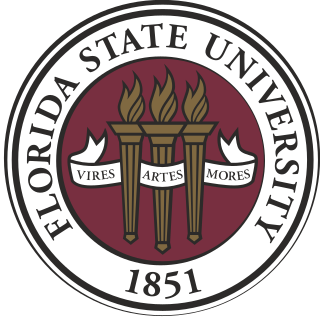This is a list of meteorology topics. The terms relate to meteorology, the interdisciplinary scientific study of the atmosphere that focuses on weather processes and forecasting.
y708
The National Severe Storms Laboratory (NSSL) is a National Oceanic and Atmospheric Administration (NOAA) weather research laboratory under the Office of Oceanic and Atmospheric Research. It is one of seven NOAA Research Laboratories (RLs).

The lifted index (LI) is the temperature difference between the environment Te(p) and an air parcel lifted adiabatically Tp(p) at a given pressure height in the troposphere of the atmosphere, usually 500 hPa (mb). The temperature is measured in Celsius. When the value is positive, the atmosphere is stable and when the value is negative, the atmosphere is unstable.

Ronald William Przybylinski was an American meteorologist with primary areas of interest in bow echoes, mesovortices, and quasi-linear convective system (QLCS) tornadoes.
Neil Burgher Ward, American meteorologist, was the first scientific storm chaser, and second known storm chaser, developing ideas of thunderstorm and tornado structure and evolution as well as techniques for forecasting and intercept. He also was a pioneering developer of physical models of tornadoes, first at his home, then at the National Severe Storms Laboratory (NSSL). He significantly furthered understanding of atmospheric vortices, particularly the tornado.
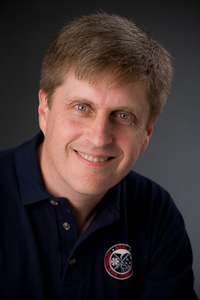
Harold Edward Brooks is an American meteorologist whose research is concentrated on severe convective storms and tornadoes, particularly severe weather climatology, as well as weather forecasting.

The European Severe Storms Laboratory (ESSL) started as an informal network of European scientists with the goal to advance research on severe convective storms and extreme weather events on a European level and can be seen as the European equivalent to the National Severe Storms Laboratory. Severe weather includes extreme local meteorological events like tornados, heavy precipitation events and avalanches. The ESSL focuses on research questions concerning convective storms and other extreme weather phenomena which can be treated more efficiently on a pan-European scale.
Howard Bruce Bluestein is a research meteorologist known for his mesoscale meteorology, severe weather, and radar research. He is a major participant in the VORTEX projects. A native of the Boston area, Dr. Bluestein received his Ph.D. in 1976 from MIT. He has been a professor of meteorology at the University of Oklahoma (OU) since 1976.

Roger M. Wakimoto is an atmospheric scientist specializing in research on mesoscale meteorology, particularly severe convective storms and radar meteorology. A former director of the National Center for Atmospheric Research (NCAR), Wakimoto in November 2012 was appointed as assistant director of the Directorate for Geosciences (GEO) of the National Science Foundation (NSF).
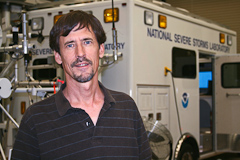
Erik Nels Rasmussen is an American meteorologist and leading expert on mesoscale meteorology, severe convective storms, forecasting of storms, and tornadogenesis. He was the field coordinator of the first of the VORTEX projects in 1994-1995 and a lead principal investigator for VORTEX2 from 2009-2010 and VORTEX-SE from 2016-2017, as well as involved in other smaller VORTEX offshoots and many field projects.
The following is a glossary of tornado terms. It includes scientific as well as selected informal terminology.
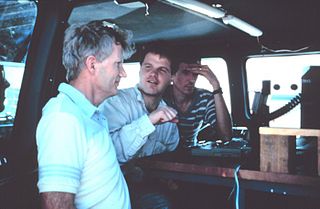
Robert Peter Davies-Jones is a British atmospheric scientist who substantially advanced understanding of supercell and tornado dynamics and of tornadogenesis. A theoretician, he utilized numerical simulations as well as storm chasing field investigations in his work as a longtime research meteorologist at the National Severe Storms Laboratory (NSSL) in Norman, Oklahoma.

Louis John Wicker is an American atmospheric scientist with expertise in numerical analysis, numerical simulation, and forecasts of severe convection and tornadoes. Doing storm chasing field research, Wicker deployed the TOtable Tornado Observatory (TOTO) and was in leadership roles in the VORTEX projects. He is also known for pioneering work simulating convection at the National Center for Supercomputing Applications (NCSA) at the University of Illinois at Urbana–Champaign (UIUC).

Adam James Clark is an American meteorologist at the Cooperative Institute for Mesoscale Meteorological Studies (CIMMS) and the National Severe Storms Laboratory (NSSL) recognized for contributions to numerical modeling of convection.
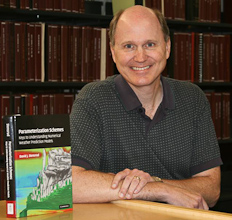
David Jonathan Stensrud is an American meteorologist recognized for numerical modeling and forecasting of hazardous synoptic and mesoscale weather and for incorporating new data into models.
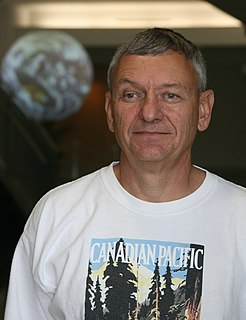
Donald W. Burgess is an American meteorologist who has made important contributions to understanding of severe convective storms, particularly tornadoes, radar observations and techniques, as well as to training other meteorologists. He was a radar operator during the first organized storm chasing expeditions by the University of Oklahoma (OU) in the early 1970s and participated in both the VORTEX projects.
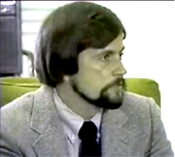
Alan Roger Moller was an American meteorologist, storm chaser, nature and landscape photographer known for advancing spotter training and bridging operational meteorology with research.

Roger Edwards is an American meteorologist and expert on severe convective storms (thunderstorms). He is the co-founder and editor-in-chief of the Electronic Journal of Severe Storms Meteorology (EJSSM).
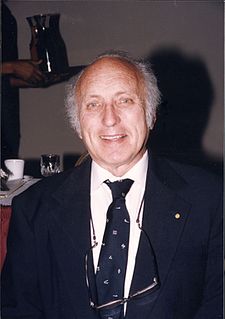
Edwin Kessler III was an American atmospheric scientist who oversaw the development of Doppler weather radar and was the first director of the National Severe Storms Laboratory (NSSL).


